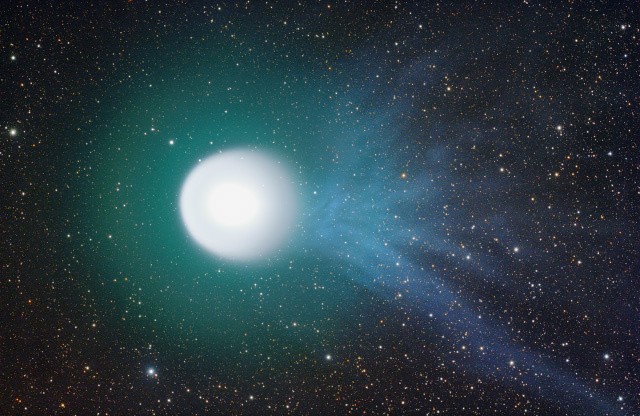Comet 17P/Holmes exploded with the largest known outburst in astronomical history, and its dust has been traveling across space ever since. This year, it will be visible in the heavens above Earth.

An Amazing Event
Stargazers may see a remarkable once-in-a-lifetime occurrence as dust spewed from a comet's explosion reaches the inner solar system after a complete moon eclipse and a modest meteor outburst. This comet erupted in 2007, and the outburst spray has been sweeping the galaxy ever since, eventually reaching Earth this year.
In 2007, comet 17P/Holmes erupted, generating a huge burst of gas and dust, brightening by a factor of a million and temporarily becoming the solar system's biggest object. In October of that year, the comet's outburst was the greatest known comet outburst to date.
Researchers documented the development of the dust trail formed in this phenomenon in a report published in the Monthly Notices of the Royal Astronomical Society. The researchers wrote in the study, "We provide predictions for the two-revolution dust trail behavior around the outburst location that ground-based observatories should detect in 2022."
The team calculated when and where the dust particle trail formed by this occurrence would be visible from Earth, led by experts from Finland's Finnish Geospatial Research Institute. The vast number of particles ejected from the comet's coma during the outburst spread into elliptic orbits around the Sun, providing a unique opportunity to study the cometary material, according to Maria Gritsevich, a senior researcher at the institute. The team has developed a new model to describe the evolution of cometary dust trails realistically.
Comet Remnants
According to researchers, the dust trails left by the comet outburst should be visible using even small ground-based telescopes in August 2022, beginning as early as the end of July. The team says amateur astronomers may view the dust trail using the image subtraction approach using at least a 30 cm telescope outfitted with a CCD camera.
The crew has already seen the dust trail, and the report describes the hourglass pattern created by the particles in a comet's track. According to the findings, the particle cloud generates a cyclic 'hourglass' pattern that converges at precise spots in space.
"I've been modeling well-known meteor streams, such as Leonids, using modern simulation methods since 2000," Markku Nissinen, a member of the Finnish Fireba, says. "In this study, we've also modeled the exact outburst event of the comet 17P/Holmes and the propagation of produced dust particles of the dust trail with high precision. This is the first time that these two models are combined, and in this kind of high-precision way, the result.
Hubble Data
The Hubble space telescope initially identified comet 17P/Holmes on June 15, 1999, when there was almost no dusty veil around the nucleus. According to scientists, the nucleus of the comet was just 3.4 kilometers across at the time.
Hubble returned to the comet in 2007 to investigate why it had unexpectedly brightened and used its Wide Field Planetary Camera 2 to observe the object for many days (WFPC2). The dust in the east-west direction (horizontal direction) was different from the dust in the north-south direction (vertical direction), giving the comet a "bow-tie" look.
The comet was 149 million miles distant from Earth at the outburst.
For more Space news, don't forget to follow Nature World News!
© 2025 NatureWorldNews.com All rights reserved. Do not reproduce without permission.





